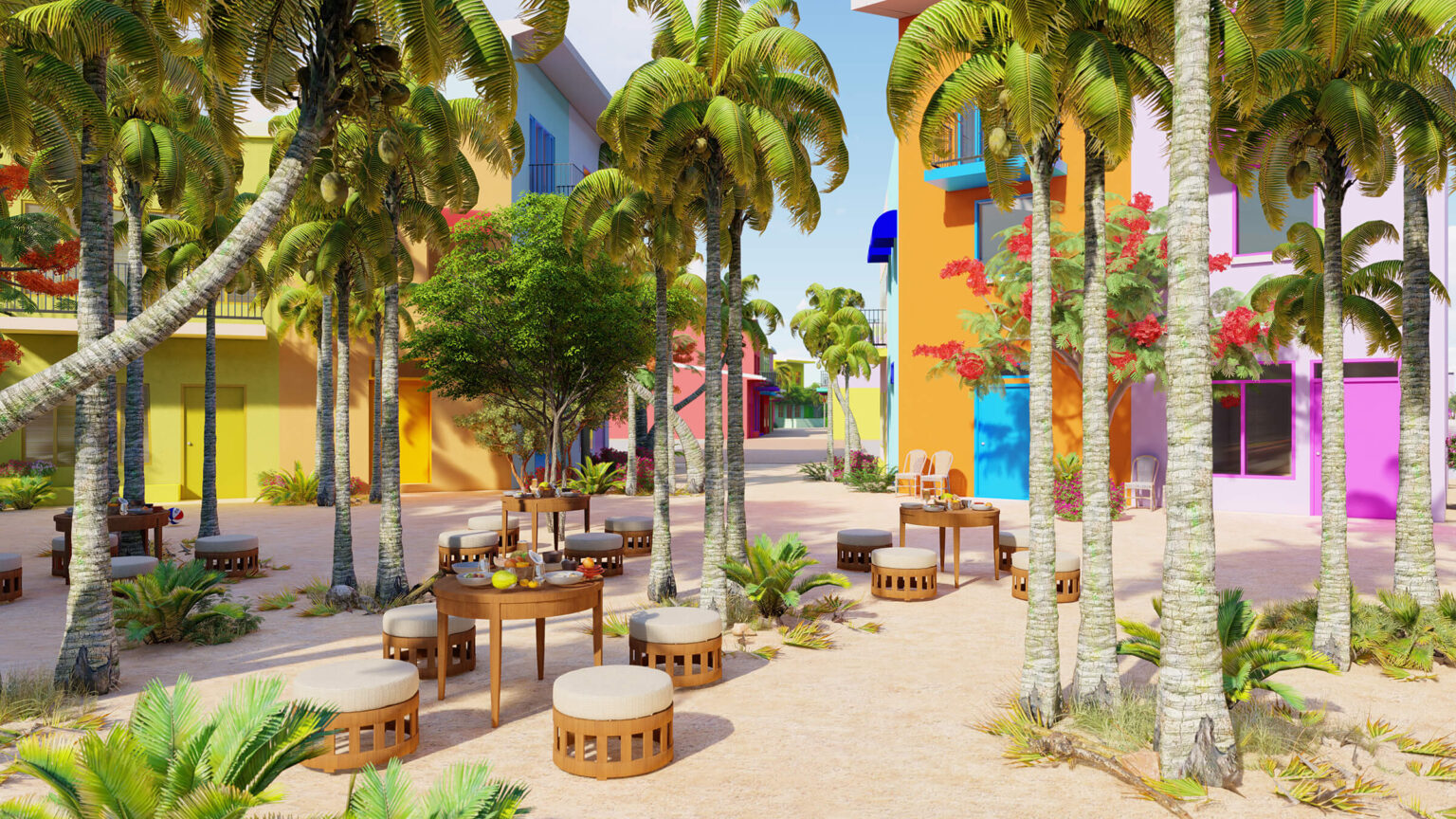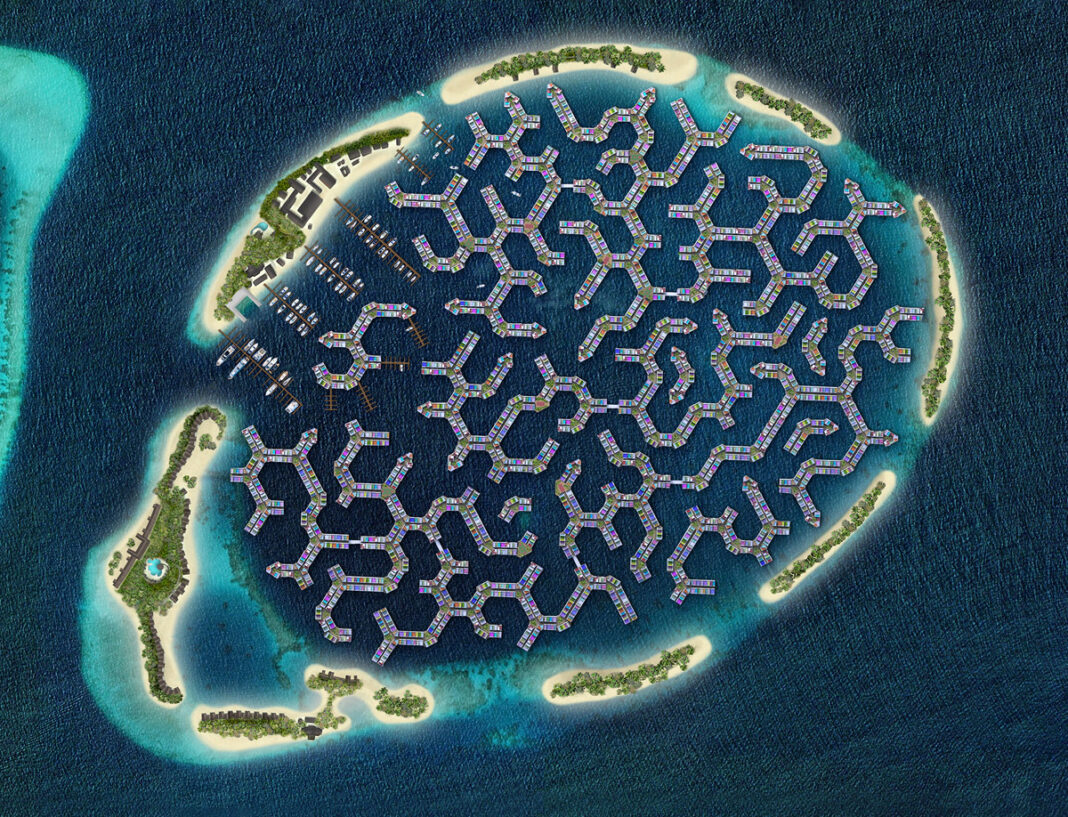The Maldives Floating City is a project to save the Maldives. This archipelago consists of 1190 islands and the average altitude here is around 1 meter above sea level. By the end of this century, the sea level will rise by one meter and this would mean that the Maldives would completely disappear below sea level.
The unique project will protect the residents of the Maldives
Thanks to this project, the residents of the Maldives will not have to flee to the mainland, but can continue to live in their place. Already by 2050, the Maldives should become uninhabitable. The Maldives government recently unveiled plans for what the floating city will look like. This project is designed by the Netherlands-based Dutch Docklands, will be built in a lagoon in a series of hexagonal maze rows that are aimed to have the look of coral.

A fully functioning city
The floating city will not only consist of residential buildings, but there will also be hotels, restaurants, stylish boutiques and also a port. Maldives Floating City is the first of its kind across the globe — developed to equally embrace sustainability and livability. At the heart of MFC is its innovative approach to sophisticated, city-center living.
Working with Waterstudio, an urban-planning and architecture firm, Dutch Docklands has devised an on-the-water urban grid built to evolve with the changing needs of the nation, its inhabitants and global visitors.

Coral, for instance, plays a crucial role in the MFC master-plan. The “city” itself is composed of hexagon-shaped segments modeled, in part, on the distinctive geometry of local coral and connected to a ring of lush barrier islands. While MFC floats up top, island barriers around the lagoon will serve as breakers down below. It will offer thousands of waterfront residences, starting at $250,000 for about 92.9 square meters (1,000 square feet), floating beside a functional gridwork.

“MFC does not require any land reclamation, therefore has a minimal impact on the coral reefs,” says Mohamed Nasheed, who was the president of the Maldives between 2008 and 2012, per Travel Weekly. “What’s more, giant, new reefs will be grown to act as water breakers. Our adaptation to climate change must not destroy nature but work with it, as the MFC proposes. In the Maldives, we cannot stop the waves, but we can rise with them.”
Construction of the floating city began this year, and the entire project should be completed in 2027. The first residents can start moving into the floating city as early as 2024. Learn more in the video below.
Source & credit: https://maldivesfloatingcity.com
















